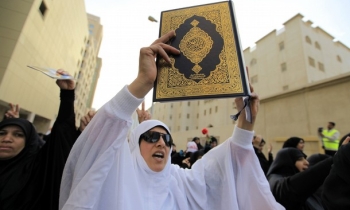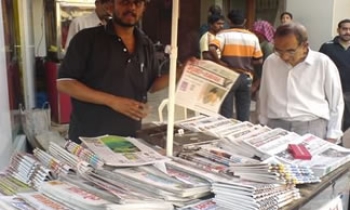It began with call centers, technology firms and the pharmaceutical industry. Now it appears the rush to capitalize on India’s booming economy has spread to the Western print media.
Foreign publishers – particularly those based in the United States – are scrambling to set up shop in India. After finding success in China, the industry now views India as the last vast untapped market for Western magazines.
“India has the world’s fastest-growing economy, it is a very literate country and people there are hungry for information,” said John Zieser, chief development officer at Meredith Corp. The Des Moines, Iowa-based media conglomerate announced in November that it would launch an India edition of its best-selling women’s magazine, Better Homes and Gardens, by early 2007.
“We think there is strong growth potential in that market, and you’re going to continue seeing a lot of U.S.-based magazines start up over there in the very near future,” he added.
It’s easy to see why: As circulation and revenues flatten in the United States and other Western nations, it’s boom time for the magazine sector in India. Take the growth in readership: The National Readership Studies Council – a research partnership consisting of the Advertising Agencies Association of India, the Audit Bureau of Circulations, and the Indian Newspaper Society — released a comprehensive survey last August that revealed India has roughly 200 million magazine readers, is the second-largest newspaper market in the world, behind China; and the number of Indians ages 12 and up who read daily newspapers and magazines has risen from 216 million to 222 million over the last three years. The survey also found the country’s literacy rate rose from 69.9 percent to 71.1 percent over the last year.
Those facts bode well for the print media, yet India remains a relatively untapped market. But that could be changing, according to a report issued last March by PricewaterhouseCoopers Private Ltd., which projected the Indian entertainment and media industry will grow at a 19-percent compound annual rate through 2010. The report said economic growth, rising income levels, and consumerism – coupled with technological advancements and recent policy initiatives adopted by the Indian government – are attracting more foreign direct investment into India.
“Two factors that will contribute to the growth of the industry are low media penetration in lower socio-economic classes and low ad spends,” said Deepak Kapoor, executive director of PricewaterhouseCoopers’ entertainment and media practice in India. “Today, media penetration is poor in lower socio-economic classes, but efforts to increase it even slightly are likely to deliver much higher results, simply due to the absolute numbers being so large.”
Charles McCullagh, the senior vice president of member services for the Magazine Publishers of America, an industry trade group, said Western publishers view India, China and other developing nations as a lucrative market because the United States and Europe – currently, the dominant markets for the industry — have “matured.”
“The United States and Europe are large and profitable markets for the domestic magazines you find on the newsstand, but they’re also mature markets,” McCullagh said. “That said, the magazine industry is looking toward emerging economies like China and India for much of its future growth. International publishing is considered less risky than the domestic markets, and it carries with it the likelihood of good financial returns. One can sell a brand across many nations in one region and expect success because international brands travel very well.”
Yet for the last decade or so, China has received most of the attention – and investments – from foreign magazine publishers; India was largely ignored. McCullagh estimated that for every $50 foreign publishing houses invested in China last year, India received only $1.
“For various reasons, China caught the attention of foreign investors and the magazine publishers, which is quite a paradox because it’s a communist nation,” he said. “Both countries have had restrictions on media ownership, but India was slower to loosen its regulatory system. That’s one reason why India fell behind.”
U.S. magazine publishers have long attributed their struggle to enter the Indian market toward a strong protectionist sentiment entrenched in the populace, as well as tough government regulations that discouraged foreign direct investments in the Indian media.
Harold McGraw, the chairman and chief executive officer of the McGraw-Hill Companies Inc., chided Indian lawmakers for not opening up their markets to foreign publishers during a speech given last May at the International Federation of the Periodical Press World Magazine Congress in New York.
He noted the company’s flagship magazine, BusinessWeek, wanted to publish an Indian edition so as to boost its circulation across the subcontinent, but was stymied by government restrictions on foreign ownership of media ventures in India.
“BusinessWeek can’t produce a local edition in India because the Indian government will not give us a license to do so,” McGraw said. “I understand that more than 100 other foreign-owned business publications are in the queue in India, waiting for a license. This is the India that is more inwardly focused, protecting its market, rather than the India that is outwardly focused, liberalizing trade.”
Not long after that, India’s parliament — at the behest of Prime Minister Mammoham Singh — voted to relax the country’s rules governing foreign direct investment in the Indian economy. The decision fueled a surge of investments into the Indian media by foreign publishers that shows no sign of abating.
“The previous regulatory system made it very difficult for foreign companies to invest in the Indian economy,” McCullagh said. “But to the Indian government’s credit, it amended the rules and now it’s much easier to do business there.”
Scores of Western consumer and trade magazines have launched Indian editions over the last year and many others have announced plans to do so. Some of the most recognizable banners that have set up shop in India include Playboy, Maxim, Cosmopolitan, Golf Digest, Good Housekeeping, the Harvard Business Review, Men’s Health, CIO, Marie Claire, PC World and the Journal of Neurology.
Meredith Corp. announced in November that it had reached a licensing agreement with Media Transasia India Ltd. to publish and market Better Homes and Gardens. Under the terms of the agreement, Media Transasia will own and publish an English-language version of the magazine and assume all operating costs. The magazine is expected to hit newsstands across India in early 2007. Better Homes and Gardens is one of the largest magazine titles in the United States, with a circulation of 7.6 million and an estimated readership base of nearly 40 million.
“This arrangement essentially pays us a royalty on the revenue Better Homes and Gardens will generate in India,” Zieser, of Meredith Corp., said. “We like licensing agreements because they are simple and straightforward. All the startup costs are left to the licensee and we just take a cut of the revenue.”
Government regulations allow foreign companies to own just 26 percent equity in print media ventures such as newspapers and consumer magazines. Thus, most of the above-mentioned magazines are published in India through joint ventures forged between U.S.-based publishing companies and their Indian partners.
But Conde Nast Publications Inc. intends to buck that rule. The New York-based media giant announced in December that it will publish an Indian edition of Vogue magazine, sans a joint venture or licensing agreement.
“Unlike most other Western publishers, Conde Nast will own and operate its own magazines in India rather than publishing through a joint venture or a license,” Conde Nast International chairman Jonathan Newhouse said in a statement. “This approach reflects Conde Nast’s deep commitment to the Indian market.”
Officials at India’s Information & Broadcasting Ministry, which regulates the media there, were not available for comment.
Vogue will publish in Mumbai, India’s entertainment center. The Indian edition will be the magazine’s 17th worldwide, according to Conde Nast.









